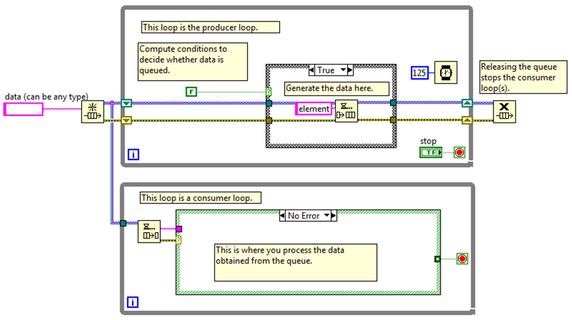Producer/Consumer
Use the Producer/Consumer design pattern for data sharing between multiple loops running at different rates. The Producer/Consumer pattern’s parallel loops break down into two categories; those that produce data, and those that consume the data produced. Data queues communicate data between loops in the Producer/Consumer design pattern. These queues offer the advantage of data buffering between producer and consumer loops.

The Producer/Consumer pattern gives you the ability to easily handle multiple processes at the same time while iterating at individual rates. What makes this pattern unique is its added benefit of buffered communication between application processes. When there are multiple processes running at different speeds, buffered communication between processes is extremely effective. For example, an application has two processes. The first process performs data acquisition and the second process takes that data and places it on a network. The first process operates at three times the speed as the second process. If the Producer/Consumer design pattern is used to implement this application, the data acquisition process will act as the producer and the network process the consumer. With a large enough communication queue (buffer), the network process will have access to a large amount of the data that the data acquisition loop acquires. This ability to buffer data will minimize data loss.[1]
Use Cases
Add yours here
References
- ↑ "Application Design Patterns: Producer/Consumer" by National Instruments (http://www.ni.com/white-paper/3023/en/)
